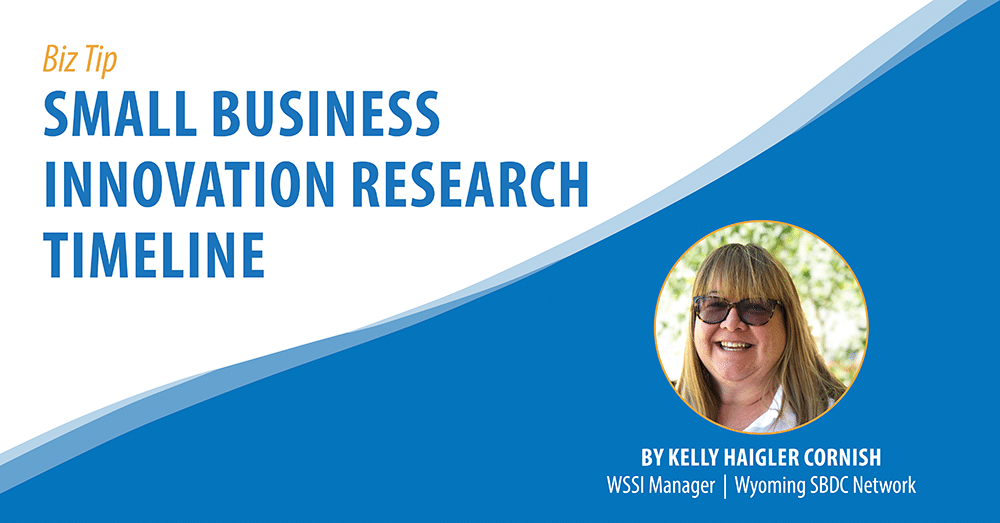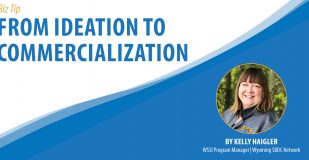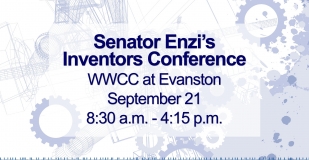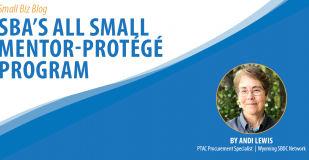If you have an idea or invention, there is a federal innovation funding program that may be able to help youwith research, development, and commercialization. This program awards about $2.5 billion annually to small businesses who have an innovation that may improve our country. We’ve developed a helpful Small Business Innovation Research (SBIR) Timeline to help you navigate this process.
First-time applicants and those who are just considering an application for funding from one of the federal agencies often ask how long it takes to prepare an SBIR application. This question can be answered a couple of ways. The easiest answer is, it takes 100-200+ hours. While that is a true statement, it really isn’t helpful. A better question might be, “How many weeks should I plan to spend preparing my SBIR application?” The answer to that questions is, in an ideal situation, you should allow at least eight weeks or more.
To start your SBIR timeline, count back eight weeks from the federal application due date. Your Wyoming Small Business Development Center (SBDC) Network advisors will guide you throughout the process.
Eight Weeks Before Due Date:
At least eight weeks before the deadline of your selected funding opportunity, make sure that you are registered with the federal government. The Wyoming SBDC Network’s procurement specialists will help you navigate this process. You will also need to register your company at sbir.gov and complete the agency-specific proposal submission registration.
If you are a Wyoming resident operating a sole proprietorship, partnership, or you are registered with the Wyoming Secretary of State’s Office as a Wyoming Domestic company, you can apply for a Wyoming Phase 0 award to assist you with your initial proposal — known as the Phase I application. This competitively awarded $5,000 amount provides funds to help Wyoming small businesses prepare more competitive Phase I proposals.
Seven Weeks Before Due Date:
Calculate your operating expenses — known as indirect rate — to figure out what amount you will need to include in your proposal. If you are not sure what cost to include in the indirect rate, we can help with that. Size your budget by removing the costs tied to indirect rate and approximately 7% for fee/profit. The remainder is a reasonable estimate of the funds available for the direct costs on the project. Now that you have a financial picture, begin writing the work plan portion of the Phase I and keep working on it and other sections of the application through to week four.
Start contacting customers, end users, and supporters — possible funders, subcontractors, and consultants — for letters of support.
Work with your Wyoming SBDC Network advisor to submit a market research request for secondary research data to support your commercialization plan.
Four Weeks Before Due Date:
Get outside, technical reviews from trusted colleagues who can identify flaws in your research design or any gaps or omissions in the scientific literature. If you won a Phase 0, send your SBIR proposal to your Wyoming mentor.
Three Weeks Before Due Date:
Submit the Phase I application to the Wyoming SBDC Network for review. Incorporate reviewer comments into your second draft.
Two Weeks Before Due Date:
Send the second draft of your Phase I application to your Wyoming mentor and the Wyoming SBDC Network for review.
Two to Five Days Before Due Date:
We recommend that you plan to submit your Phase I proposal earlier than the due date in case any technical difficulties arise.
The process and timeline can vary for each business and each funding agency. Please note for simplification, steps were condensed and tasks were omitted. This is just a guideline and should be considered the minimum time needed to prepare a competitive Phase I application. Your Wyoming SBDC Network advisors are here to help you with every step of the Small Business Innovation Research (SBIR) Timeline and also fill in the gaps. Get started today by clicking here.
About the Author: Kelly has experience in technology transfer, intellectual property, data rights, indirect cost calculations, federal SBIR and STTR grants and contracts, and other small business topics related to innovation and research. Kelly loves working with existing small businesses to help them discover their innovative edge and working with startups that are taking the next big thing to market.






